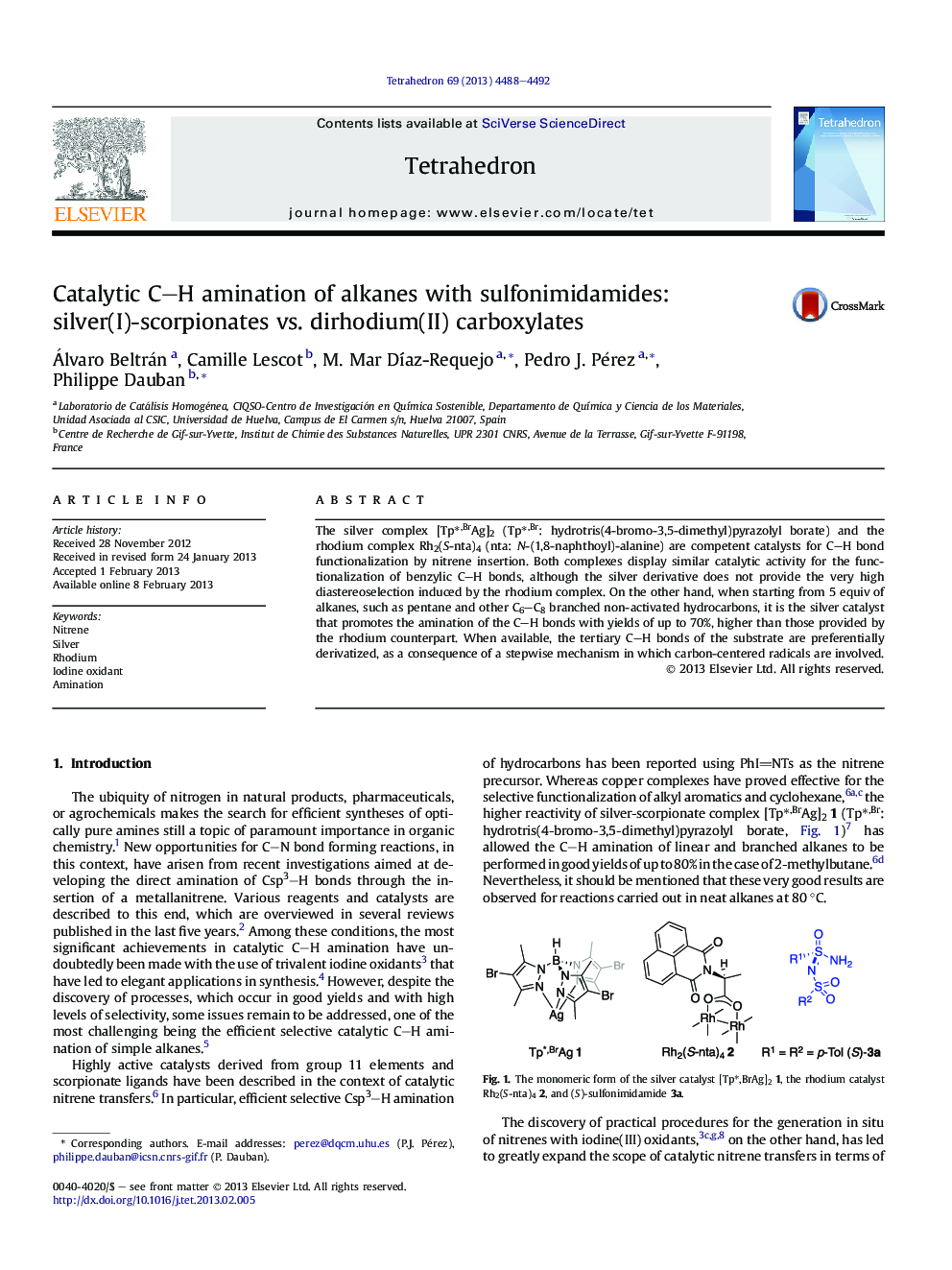| Article ID | Journal | Published Year | Pages | File Type |
|---|---|---|---|---|
| 5217376 | Tetrahedron | 2013 | 5 Pages |
The silver complex [Tpâ,BrAg]2 (Tpâ,Br: hydrotris(4-bromo-3,5-dimethyl)pyrazolyl borate) and the rhodium complex Rh2(S-nta)4 (nta: N-(1,8-naphthoyl)-alanine) are competent catalysts for C-H bond functionalization by nitrene insertion. Both complexes display similar catalytic activity for the functionalization of benzylic C-H bonds, although the silver derivative does not provide the very high diastereoselection induced by the rhodium complex. On the other hand, when starting from 5Â equiv of alkanes, such as pentane and other C6-C8 branched non-activated hydrocarbons, it is the silver catalyst that promotes the amination of the C-H bonds with yields of up to 70%, higher than those provided by the rhodium counterpart. When available, the tertiary C-H bonds of the substrate are preferentially derivatized, as a consequence of a stepwise mechanism in which carbon-centered radicals are involved.
Graphical abstractDownload full-size image
